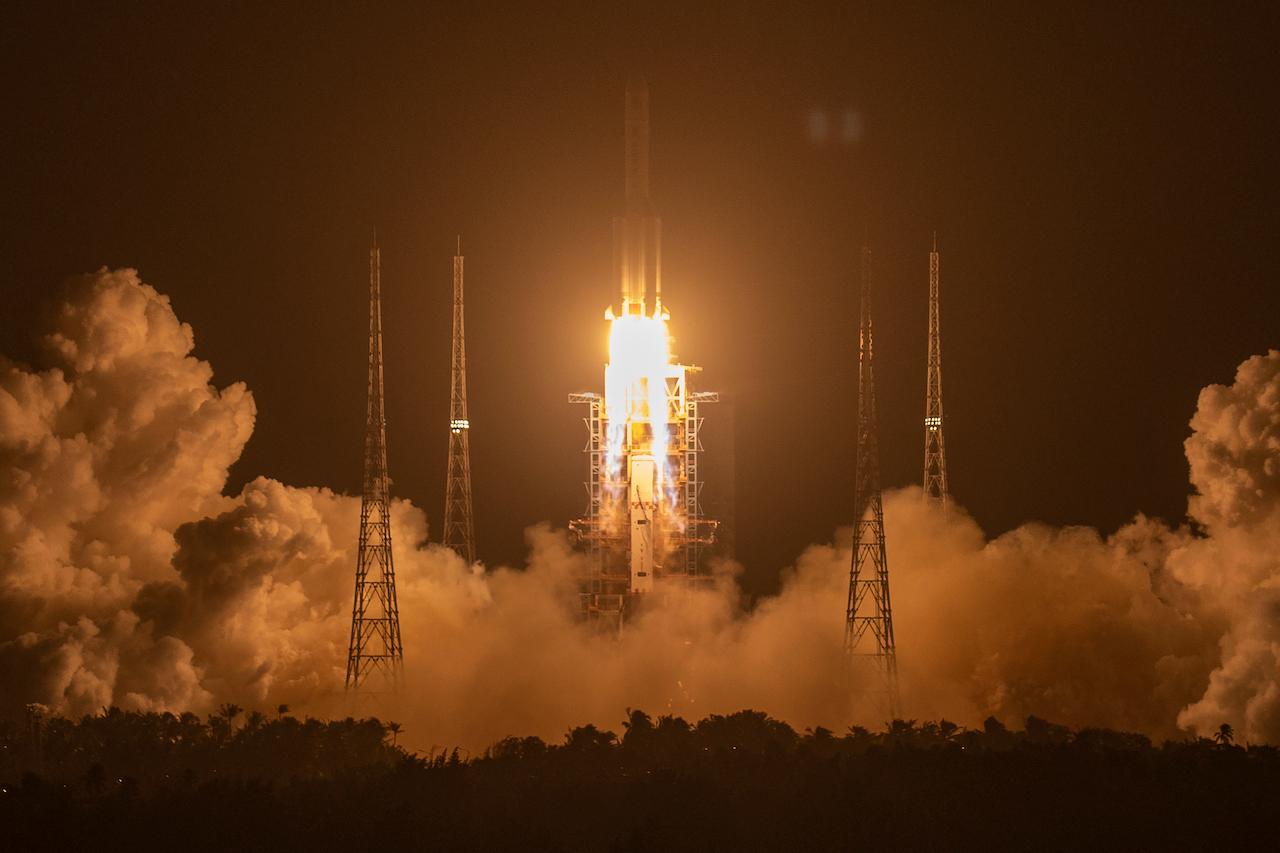Out-of-control Chinese rocket remains could crash to Earth this week
Observations from ground-based trackers suggest the fast-moving booster is heading for an 'uncontrolled re-entry' which means it’s out of control.
Just In
The booster of a large Chinese rocket could come crashing to Earth in the coming days, with no predetermined plan as to where it will land.
The massive vehicle is part of the Long March 5B rocket that recently successfully launched China’s first module for its proposed space station.
This comes roughly a year after another similar Chinese rocket fell to Earth, landing in the Atlantic Ocean but not before it reportedly left a trail of debris across the African nation of Cote D’Ivoire.
The disposable booster and the rocket-propelled module reportedly parted ways after just over eight minutes of flying together, with the module headed into space and the 20-metric tonne booster – or whatever parts of it survive re-entry – falling back to Earth soon.
According to Space News, if the nearly 100-foot-long object makes its way back into Earth’s atmosphere, it will be one of the “biggest human-made objects to perform an uncontrolled re-entry”.
While it’s likely the rocket booster would burn up into fragments and fall into the sea there is no way of knowing what will land where as it does not seem that there were effective measures in place to manage its flight after releasing the module.
Observations from ground-based trackers on Earth reportedly suggested the fast-moving booster is heading for an “uncontrolled re-entry” which means it’s out of control.
Experts say it is impossible to predict exactly where the pieces that don’t burn up in the atmosphere might land.
Given the object’s orbit, the possible landing points are anywhere in a band of latitudes “a little farther north than New York, Madrid and Beijing and as far south as southern Chile and Wellington, New Zealand”.
Australia already holds the record for being hit by the biggest piece of space junk. In 1979, the 77-tonne US space station SkyLab disintegrated over Western Australia, peppering the area around the southern coastal town of Esperance with fragments.
Esperance shire council flippantly issued Nasa with a fine for littering, and a US radio station later raised enough money to pay the debt.
Subscribe to our newsletter
To be updated with all the latest news and analyses daily.
